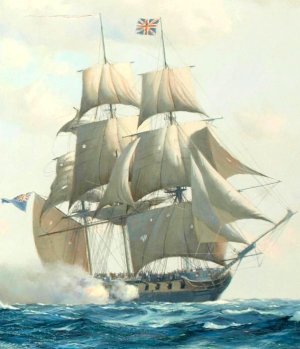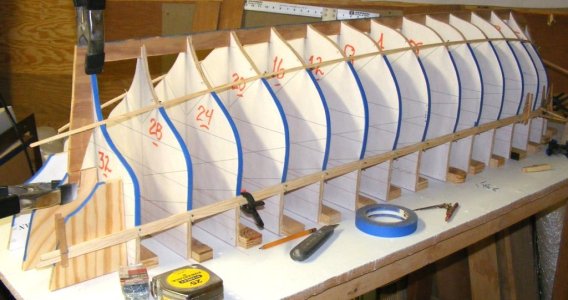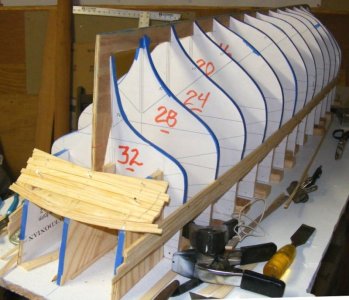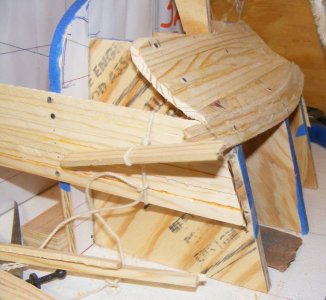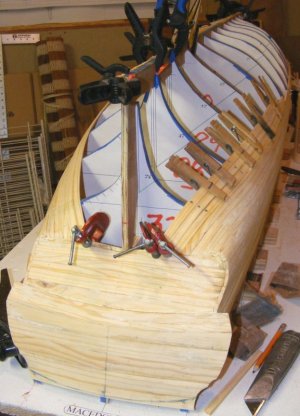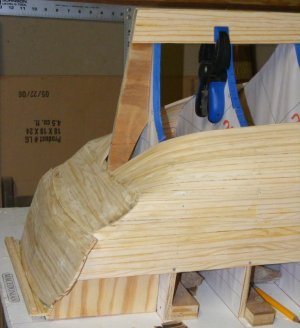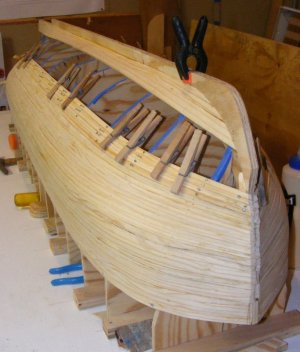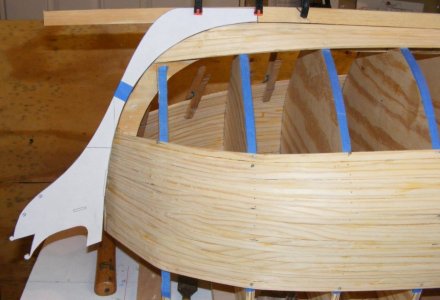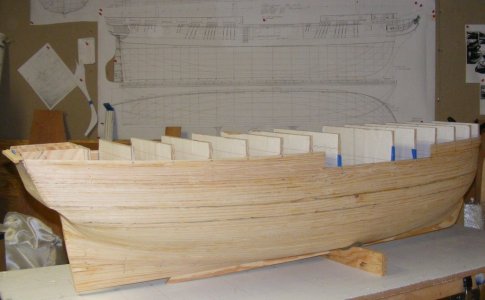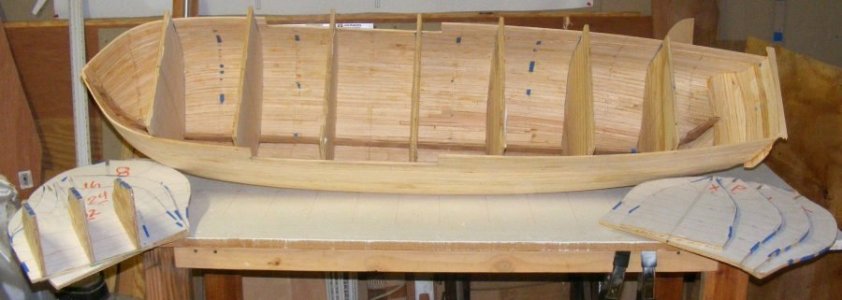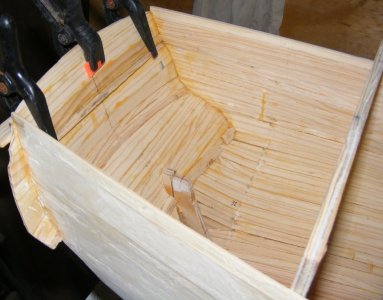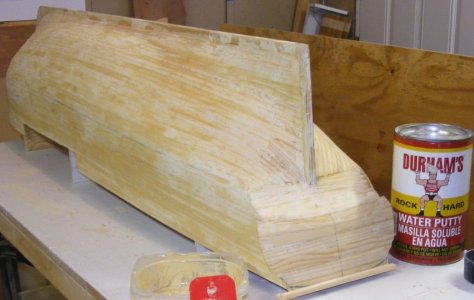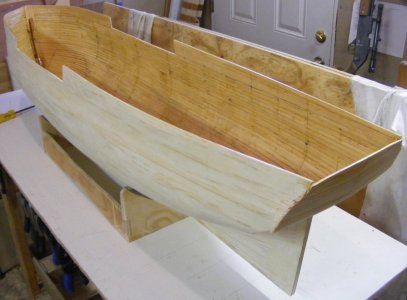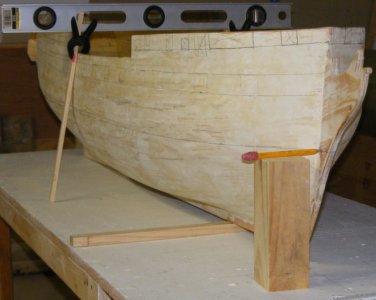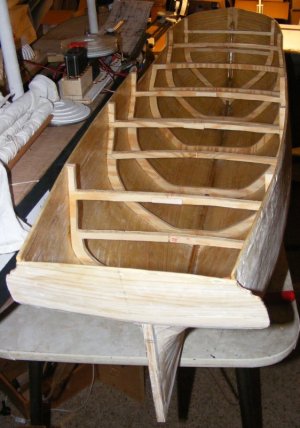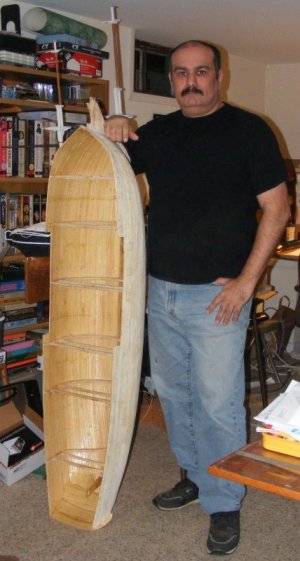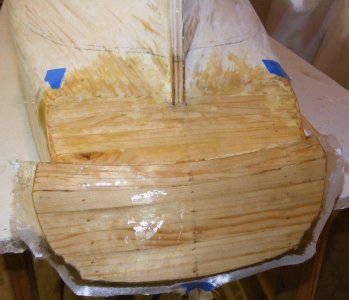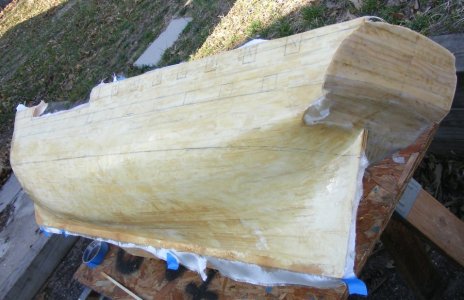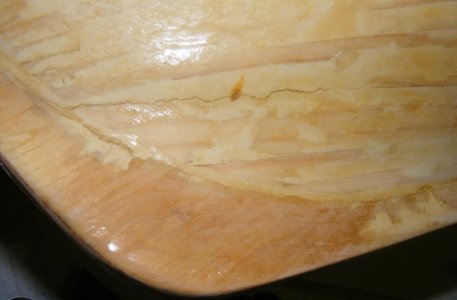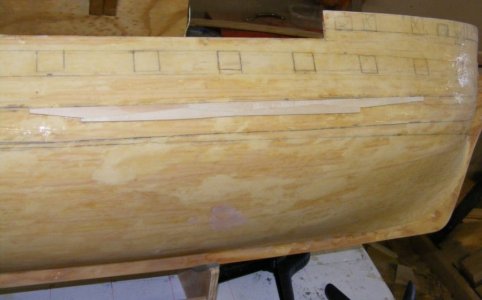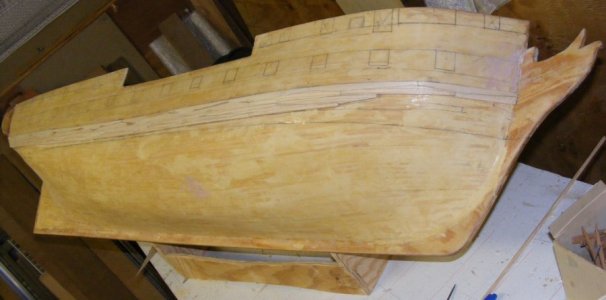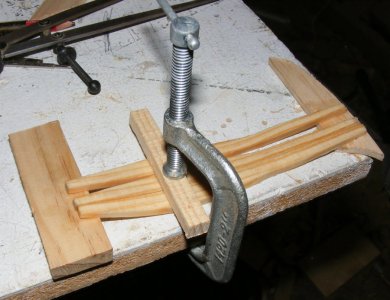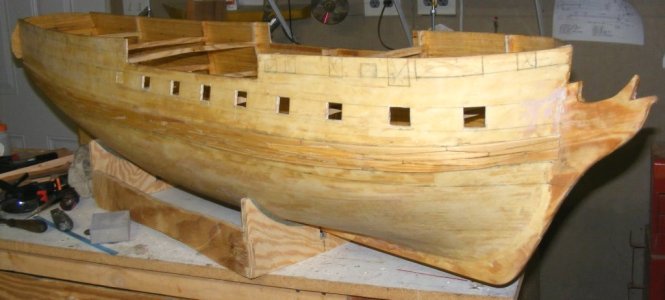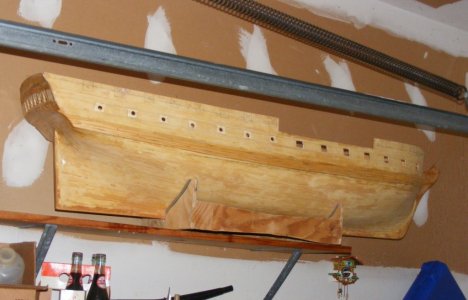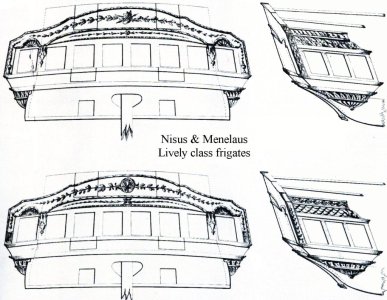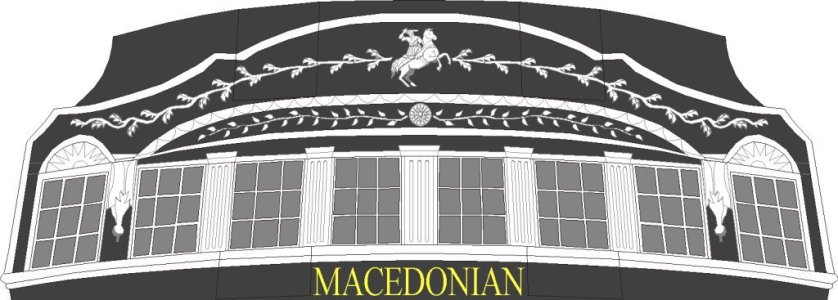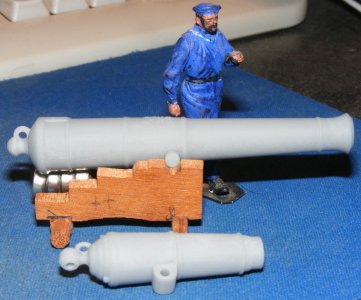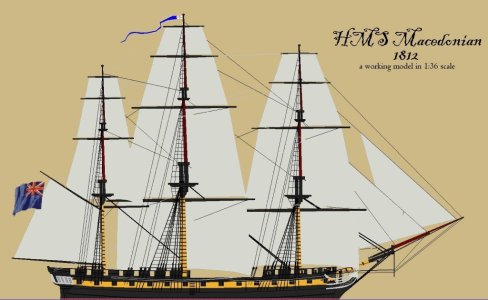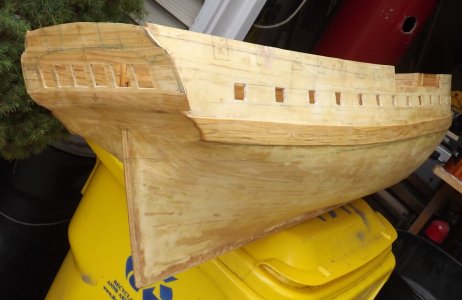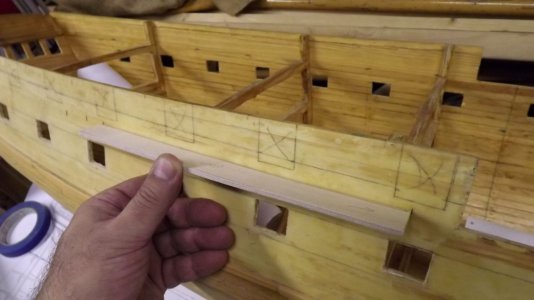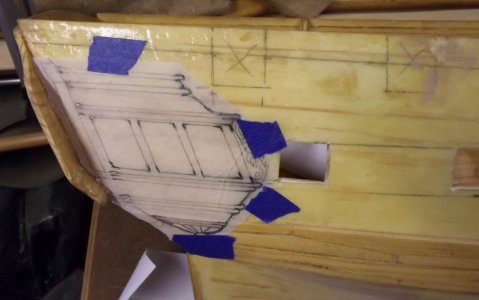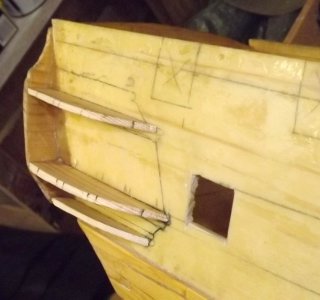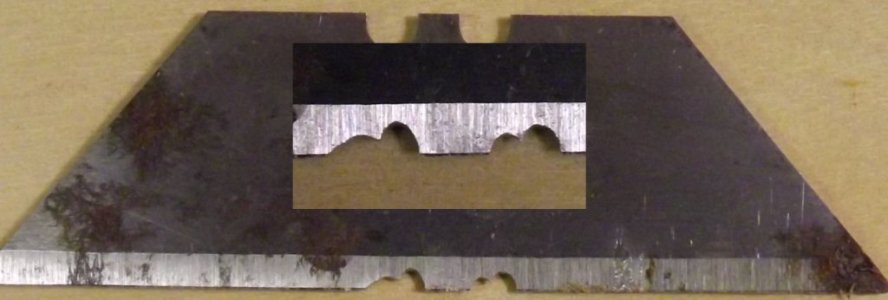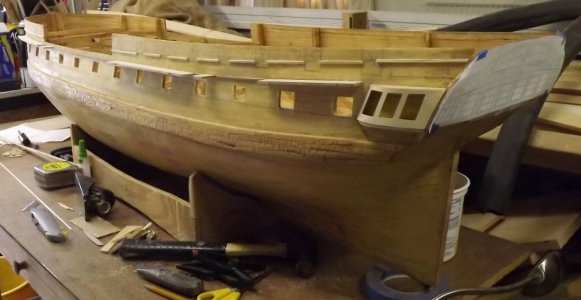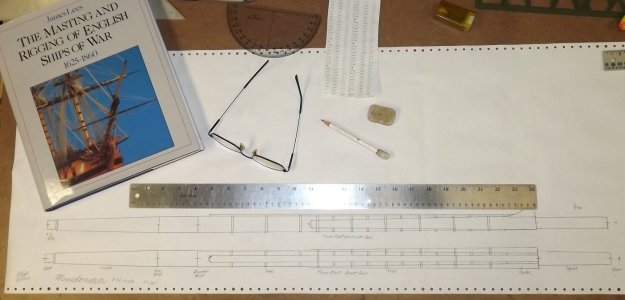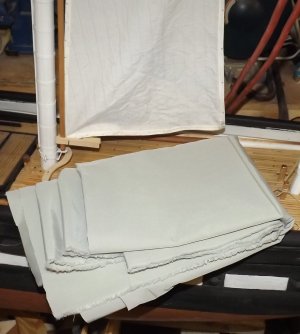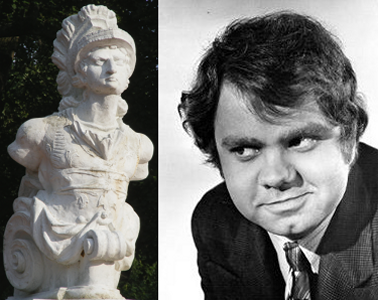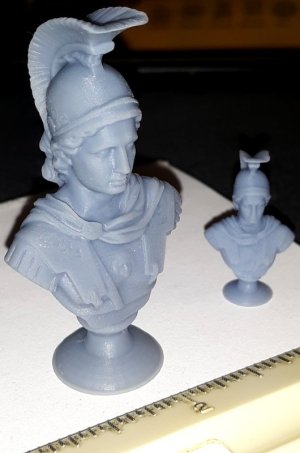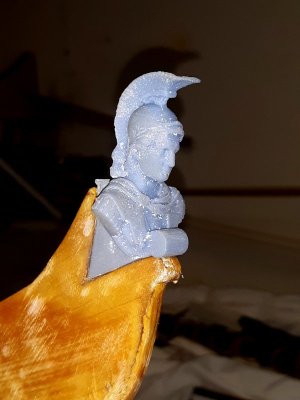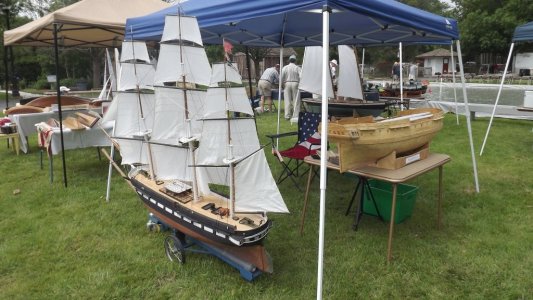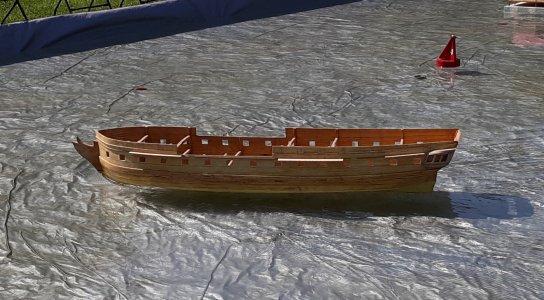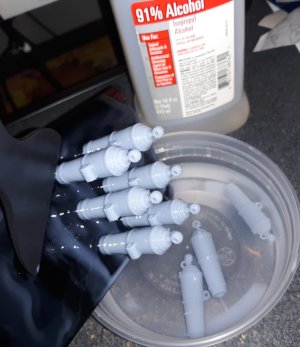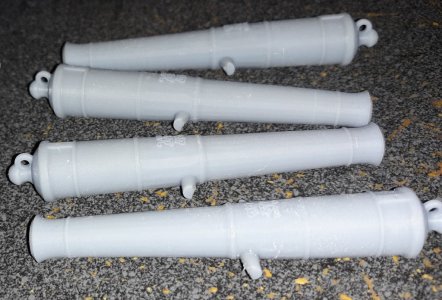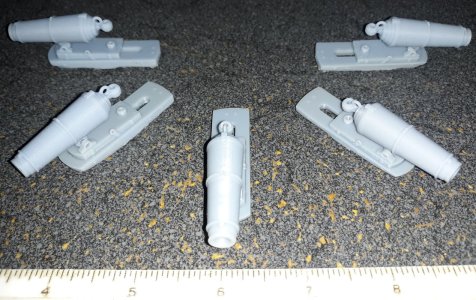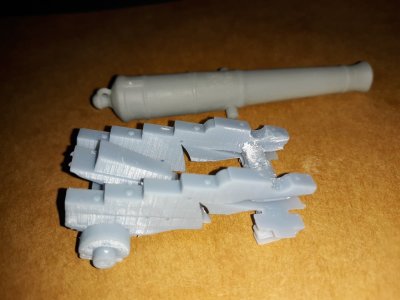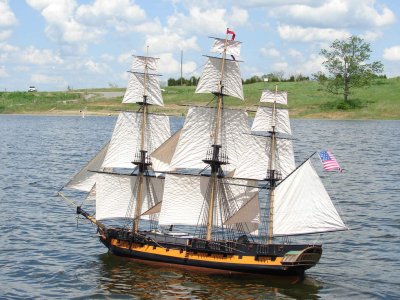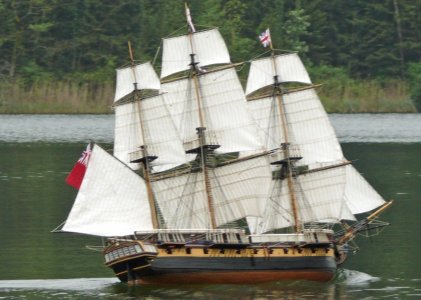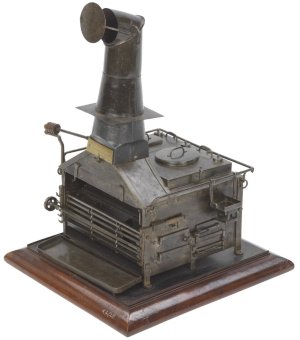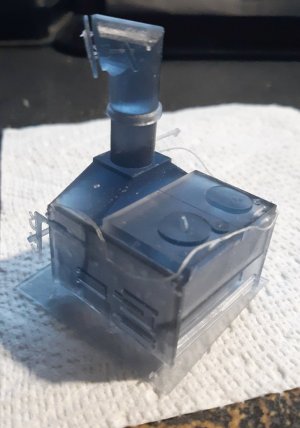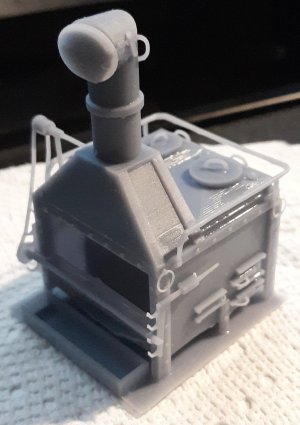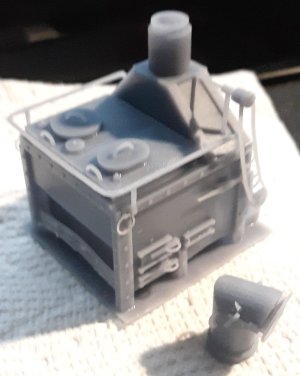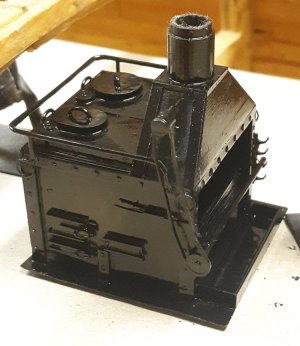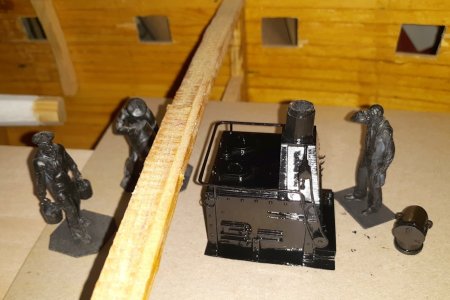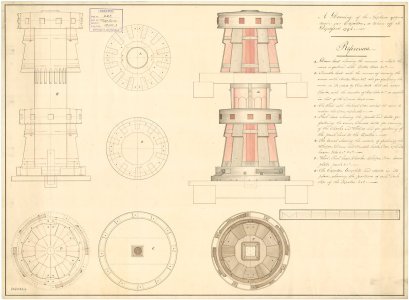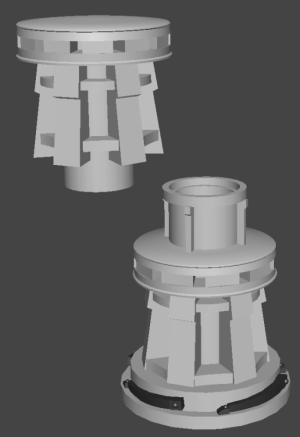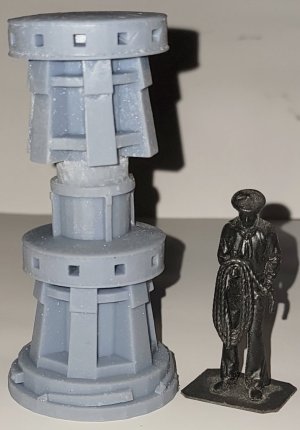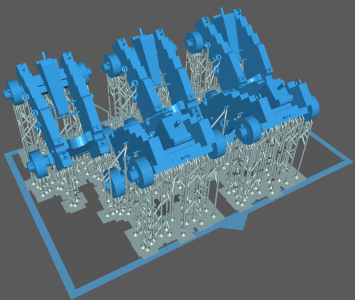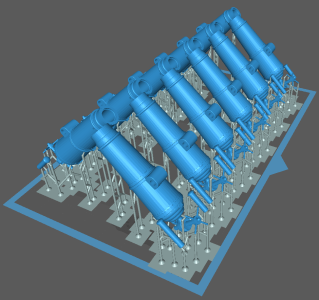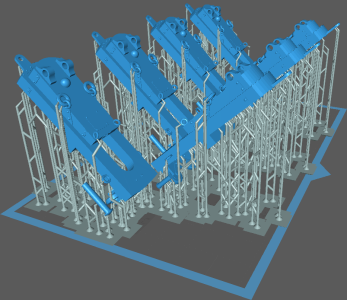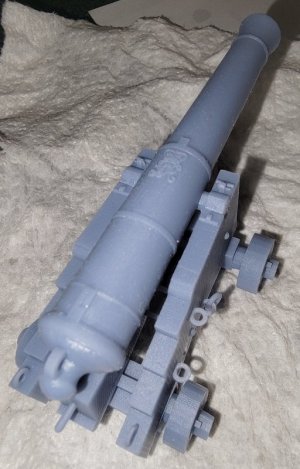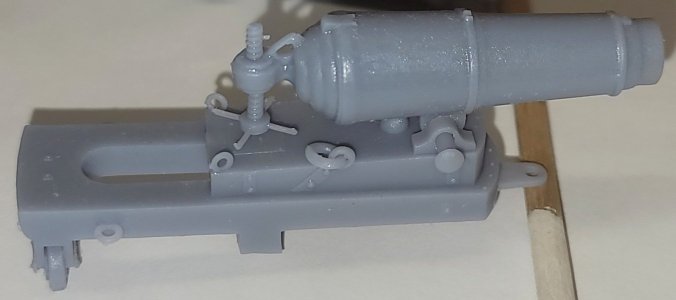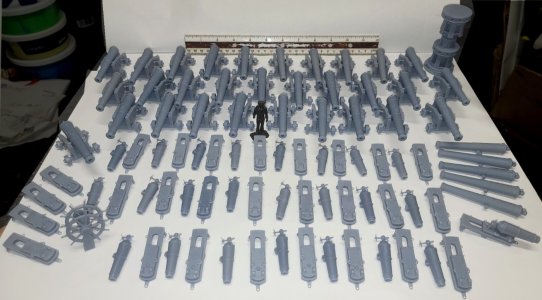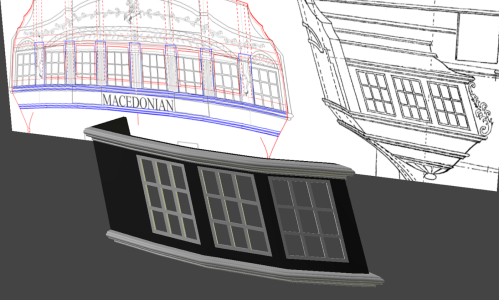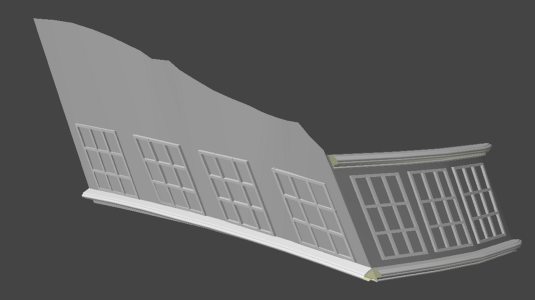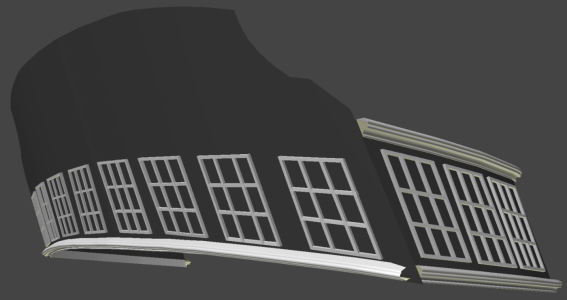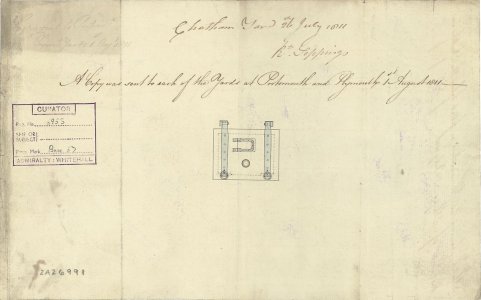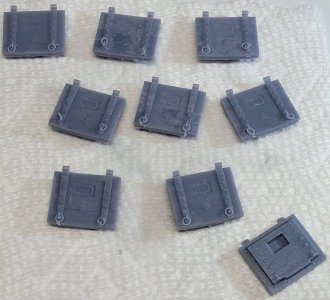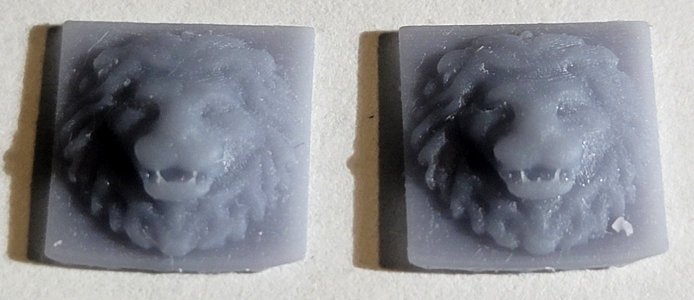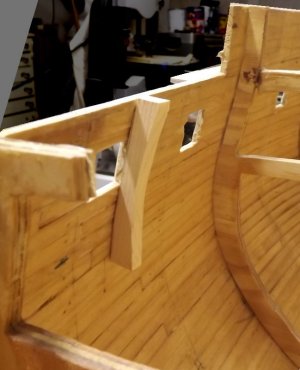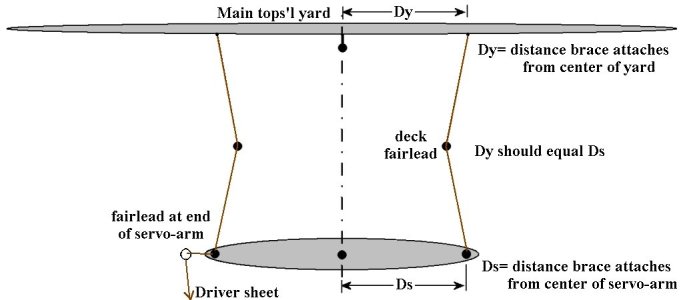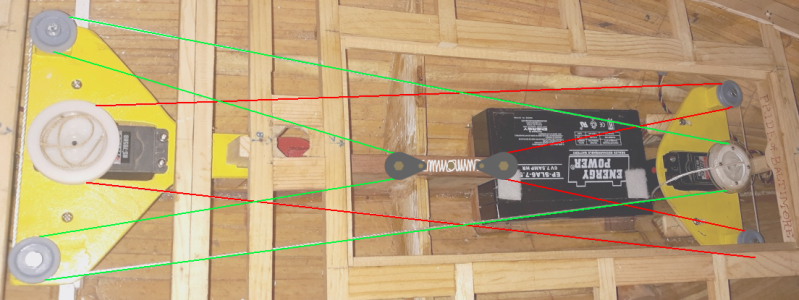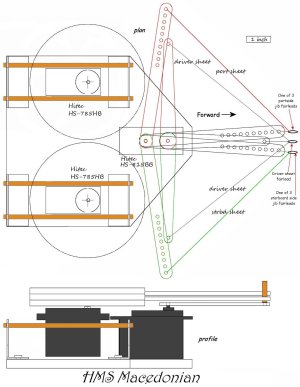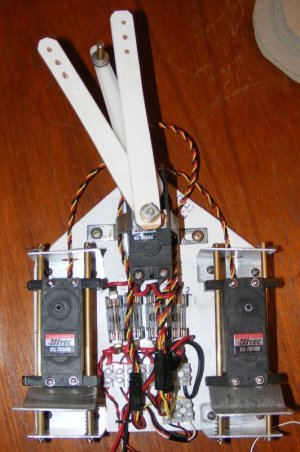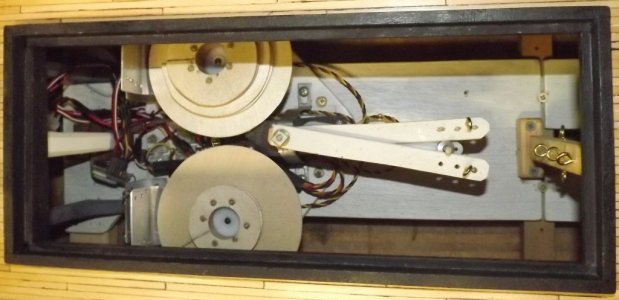All the models I've built, or converted to sail, sailed mostly in Baltimore's "Inner Harbor." I had always wanted to build a model large enough that it wouldn't bob like a cork. When I was married, and lived in my own home, a few hundred yards from Stony Creek, even more "open water," and even more-so needing a model of some size so as not to be cork-like. I finally started building one ~ Constellation (build log link in my signature below).
Being a fan of C.S.Forrester's Hornblower series, I always dreamed of an RC model of the frigate Lydia. She being a fictional vessel, the were no plans, drawing, kits, or anything else to build from, the sort of information I did have for Constellation, so she got started instead.
Howard Chapelle's History of the American Sailing Navy has one drawing of a British frigate in it, that of the Macedonian, so along about 2010 I ordered a copy of Chapelle's drawing of her from the Smithsonian Institution. They came in 1:48 scale, and I had them scanned and printed at 1:36 scale, the same as Constellation. I gave up on finding a drawing that was suitable for Lydia, though I would find one much later, and decided to go with Macedonian.
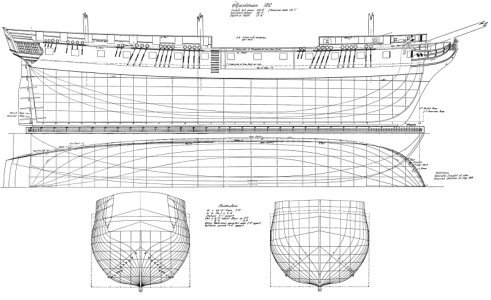
As a subject for a model, the ship had an interesting career: Built at Woolwich Dockyards, England, in 1809, and launched on 2 June 1810, Macedonian was one of sixteen Lively class frigates rated at 38 guns.
In January 1812, Macedonian was ordered to secretly deliver bills of exchange to Norfolk, Virginia, USA, and to bring back an equivalent quantity of gold and silver specie, as part of a scheme to keep the Bank of England solvent. During the visit, her then Captain Carden socialized with the notables of Norfolk, including then-Captain Stephen Decatur, but bungled the mission by inadvertently revealing what was planned, and had to return to Lisbon empty handed. While in Norfolk, Carden dined frequently with Captain Decatur and his wife Susan, and the men allegedly bet a beaver hat on the outcome of a battle of their ships.
The US declared war on Britain in June of 1812. In September, Macedonian was ordered to accompany an East Indiaman as far as Madeira, then to cruise in search of prizes as long as supplies permitted. The frigate left Madeira on 22 October, but only a few days later, on the morning of the 25th, encountered the American frigate United States, commanded by none other than his erstwhile dinner host Stephen Decatur.
Unfortunately for Carden, United States was one of the big 44-gun 24 pounder frigates, and her broadside was 864 pounds of metal, vs Macedonian's 528 pounds. Within a few minutes of closing, fire from the United States's brought down Macedonian's entire rig, and riddled the hull. United States then pulled away temporarily, leaving Carden and 1st Lt Hope, time to contemplate their lack of options. Finally, with the United States preparing to rake to again, Carden struck his colors, making the Macedonian the second Royal Navy vessel of the war to surrender to Americans.
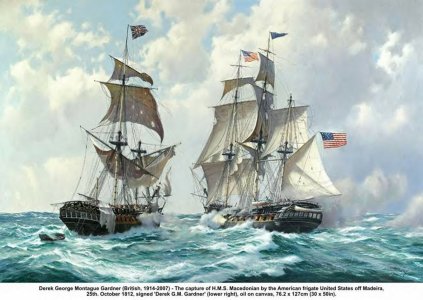
Decatur was careful to preserve Macedonian, sending over a detail to help repair her. After 2 weeks of repair at sea, Decatur then brought his prize into Newport, Rhode Island, on December 4th, causing an immediate national sensation. Constitution had previously defeated Guerriere, but she had been too badly damaged to save. Macedonian was taken into American service in April 1813 with Captain Jacob Jones in command.
After a failed attempt to run the blockade at Hell Point, she spent the remainder of the War of 1812 bottled up in the Thames River in Connecticut.
In May 1815, Macedonian joined Decatur's squadron in the Algerian War, against the Barbary powers, to stop harassment of American shipping. In June she assisted in the capture of the Algerian flagship, the frigate Mashuda, by frigates Constellation and Guerriere (a new ship), the sloops-of-war Epervier (a prize brig), and Ontario. For the next three years Macedonian patrolled the Mediterranean and off the US East Coast.
From January 1819 to March 1821 the frigate operated off the Pacific coast of South America, during the disorders following the Latin colonial revolts, before returning to Boston in June 1821. After a refit, she cruised the West Indies to suppress piracy until 1826.
On 11 June 1826 Macedonian departed Norfolk for service on the Pacific station, returning to Hampton Roads, 30 October 1828. She decommissioned in 1828 and was broken up at Gosport.
In October of 2011, having a workshop with a window AC unit, and a wood stove, plus a steady income, I started readying to build Macedonian in 1:36 scale. I had run into snags about details of Constellation, and figured Macedonian would build faster with so much more data available about Napoleonic era British frigates.
I printed her forms patterns full-sized and cut them from 3/8" (9.5mm) plywood. Rough cut them with a sabre-saw, belt sanded them to the mark, and beveled them, then stood them up on the build-board/bench Constellation and Pride of Baltimore had been built on, after sanding and painting it. The keelson and forms for the transom were added and it was off to the races!
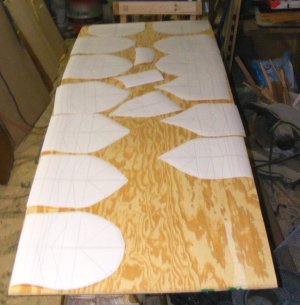
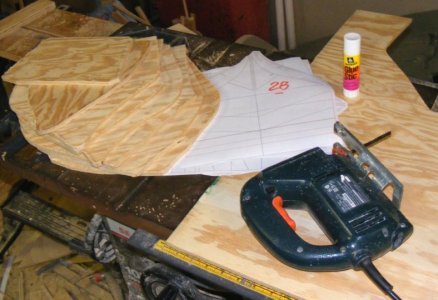
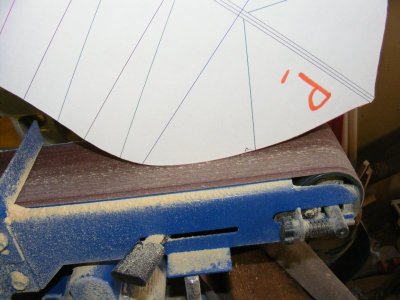
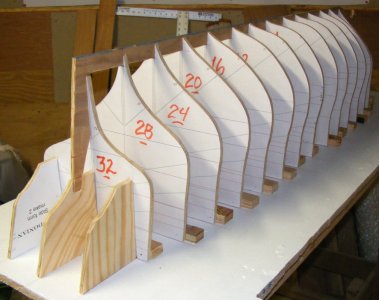
Being a fan of C.S.Forrester's Hornblower series, I always dreamed of an RC model of the frigate Lydia. She being a fictional vessel, the were no plans, drawing, kits, or anything else to build from, the sort of information I did have for Constellation, so she got started instead.
Howard Chapelle's History of the American Sailing Navy has one drawing of a British frigate in it, that of the Macedonian, so along about 2010 I ordered a copy of Chapelle's drawing of her from the Smithsonian Institution. They came in 1:48 scale, and I had them scanned and printed at 1:36 scale, the same as Constellation. I gave up on finding a drawing that was suitable for Lydia, though I would find one much later, and decided to go with Macedonian.

As a subject for a model, the ship had an interesting career: Built at Woolwich Dockyards, England, in 1809, and launched on 2 June 1810, Macedonian was one of sixteen Lively class frigates rated at 38 guns.
In January 1812, Macedonian was ordered to secretly deliver bills of exchange to Norfolk, Virginia, USA, and to bring back an equivalent quantity of gold and silver specie, as part of a scheme to keep the Bank of England solvent. During the visit, her then Captain Carden socialized with the notables of Norfolk, including then-Captain Stephen Decatur, but bungled the mission by inadvertently revealing what was planned, and had to return to Lisbon empty handed. While in Norfolk, Carden dined frequently with Captain Decatur and his wife Susan, and the men allegedly bet a beaver hat on the outcome of a battle of their ships.
The US declared war on Britain in June of 1812. In September, Macedonian was ordered to accompany an East Indiaman as far as Madeira, then to cruise in search of prizes as long as supplies permitted. The frigate left Madeira on 22 October, but only a few days later, on the morning of the 25th, encountered the American frigate United States, commanded by none other than his erstwhile dinner host Stephen Decatur.
Unfortunately for Carden, United States was one of the big 44-gun 24 pounder frigates, and her broadside was 864 pounds of metal, vs Macedonian's 528 pounds. Within a few minutes of closing, fire from the United States's brought down Macedonian's entire rig, and riddled the hull. United States then pulled away temporarily, leaving Carden and 1st Lt Hope, time to contemplate their lack of options. Finally, with the United States preparing to rake to again, Carden struck his colors, making the Macedonian the second Royal Navy vessel of the war to surrender to Americans.

Decatur was careful to preserve Macedonian, sending over a detail to help repair her. After 2 weeks of repair at sea, Decatur then brought his prize into Newport, Rhode Island, on December 4th, causing an immediate national sensation. Constitution had previously defeated Guerriere, but she had been too badly damaged to save. Macedonian was taken into American service in April 1813 with Captain Jacob Jones in command.
After a failed attempt to run the blockade at Hell Point, she spent the remainder of the War of 1812 bottled up in the Thames River in Connecticut.
In May 1815, Macedonian joined Decatur's squadron in the Algerian War, against the Barbary powers, to stop harassment of American shipping. In June she assisted in the capture of the Algerian flagship, the frigate Mashuda, by frigates Constellation and Guerriere (a new ship), the sloops-of-war Epervier (a prize brig), and Ontario. For the next three years Macedonian patrolled the Mediterranean and off the US East Coast.
From January 1819 to March 1821 the frigate operated off the Pacific coast of South America, during the disorders following the Latin colonial revolts, before returning to Boston in June 1821. After a refit, she cruised the West Indies to suppress piracy until 1826.
On 11 June 1826 Macedonian departed Norfolk for service on the Pacific station, returning to Hampton Roads, 30 October 1828. She decommissioned in 1828 and was broken up at Gosport.
In October of 2011, having a workshop with a window AC unit, and a wood stove, plus a steady income, I started readying to build Macedonian in 1:36 scale. I had run into snags about details of Constellation, and figured Macedonian would build faster with so much more data available about Napoleonic era British frigates.
I printed her forms patterns full-sized and cut them from 3/8" (9.5mm) plywood. Rough cut them with a sabre-saw, belt sanded them to the mark, and beveled them, then stood them up on the build-board/bench Constellation and Pride of Baltimore had been built on, after sanding and painting it. The keelson and forms for the transom were added and it was off to the races!




Last edited:




